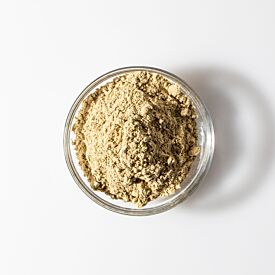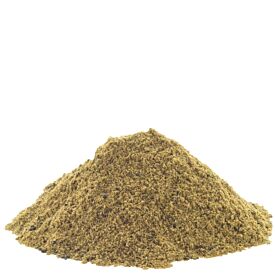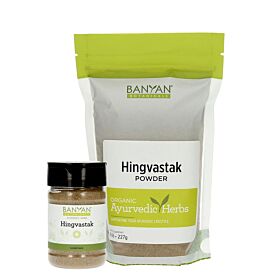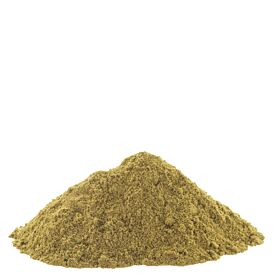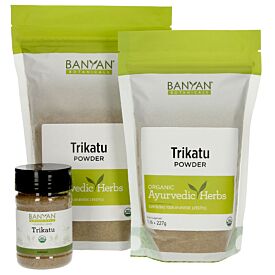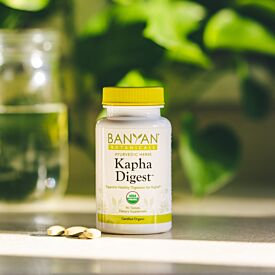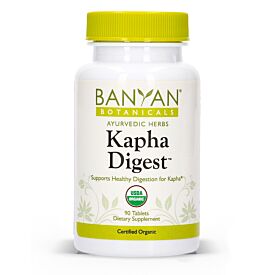Improving Your Client's Agni Through Ayurveda
A fifty-two-year-old female (prakriti pitta-kapha) presents with persistent weight gain. She practices yoga and walks for thirty minutes almost daily. She eats little. In fact, she has a very poor appetite. Of note, she has a history of hypertension, hyperlipidemia, hypothyroidism, and depression, and she is still on medications for all these imbalances. Which herb would provide the most benefit to this client, supporting her body’s natural intelligence?
- Guduchi
- Trikatu
- Hingvastak
- Kutki
Answer: B
(The background to this article is provided in the first part of this series, Agni: The Key to Optimizing Health.)
This client had seen numerous providers over decades, seeking to normalize her weight. Despite every attempt, she was always disappointed to find that her efforts had failed. A simplified approach to support her physician’s efforts by strengthening her agni provided remarkable results. The chikitsa (therapy) included Kapalabhati (Skull Shining Breath) pranayama, Kapha Digest (trikatu in tablet form) before meals, and hot water throughout the day, and with this program, her body gradually regained an overall positive state of health.
Given the widespread nature of manda agni throughout her body, trikatu was the first choice. While guduchi would have been beneficial in some quantity because of her pitta constitution, it would not have addressed the manda agni. Hingvastak works wonders for vishama agni by bringing warmth and activating the downward motion of apana vayu. However, this client’s primary issue was dullness of agni and not the common complaints of vishama agni, such as bloating or lack of downward flow. Kutki would have supported kindling bhuta agni, but focusing initially on the core jathara agni with Trikatu was best since this agni then supports all agni throughout the body.
The rest of this article will go into more specific chikitsa for manda agni and then briefly provide a few recommendations for tikshna and vishama agni.
Manda Agni
- Formulation. Many clients look for a simple tablet they can take easily. For manda agni, Kapha Digest is the go-to formulation.
-
Specific herbs. An herbal program can also incorporate powders and tinctures.
- For practitioners who prepare individualized formulations for their clients, trikatu or chitrak powder can be beneficial. Cinnamon powder is yet another alternative.
- The fresh root of ginger supports agni without provoking inflammation, and liquid extracts provide potency by infusing the herb in alcohol. Therefore, Ginger liquid extract taken before meals is quite powerful at augmenting an exceptionally weak agni.
-
Diet and lifestyle. The following practices can help clients address manda agni.
- If nothing else, avoid cold water and sip on hot water throughout the day. Americans tend to douse their agni with ice-cold water every day.
- Cook foods thoroughly so that agni has to work less to begin the digestion process. Encourage warming spices, such as cinnamon, cardamom, and clove. Discourage heavy foods, such as cheese, dairy, and meat.
- Refresh agni with a short fast or monodiet of kitchari for a week.
- Naukasana (boat pose) and uttana padasana (raised-leg pose) are two yoga poses that are balancing for all agni types. Also work up to two sets of five hundred kapalabhati for robust agni.
Tikshna Agni
Here the goal is to calm an excessively active agni without washing it out.
- Formulation. Pitta Digest balances an overheated agni while also maintaining its inherent digestive strength.
- Specific herbs. Avipattikar, shatavari, guduchi, or aloe vera will beautifully blend into a formula for those with tikshna agni.
-
Diet and lifestyle. Certain practices can assuage tikshna agni.
- Cook meals with mild digestive herbs like mint, cumin, and fennel.
- Begin the meal with a small dessert. The sweet taste is pacifying to the heat of tikshna agni.
- Soothe excess heat in the body with Nadi Shodhana (Alternate Nostril Breathing) and Sheetali (Cooling Breath) pranayama.
Vishama Agni
The mobility of vata brings irregularity, air, and poor absorption.
- Formulation. The best tablet to offer a client with vishama agni is Vata Digest (hingvastak in tablet form).
- Specific herbs. A formula for those with vishama agni should include either hingvastak, chitrak, or trikatu.
-
Diet and lifestyle. The recommendations for vishama agni are overall similar to those for manda agni since a key feature of both is creating warmth. Additionally, vishama agni benefits from vata-balancing behaviors.
- Bring regularity through a daily routine and eating at regular times of day.
- Facilitate grounding through healthy oils and fatty acids, such as organic flax seed or hemp seed oil.
- Balancing and stabilizing pranayama, like nadi shodhana and moderate kapalabhati at a slow and steady pace, will support regularity.
Fortunately, agni is fairly easy to monitor since it responds to herbs and to diet and lifestyle modifications rapidly, as it did in our case-study client. For challenged agni in deeper tissue layers, be patient and persistent as agni will begin to blossom with time.



